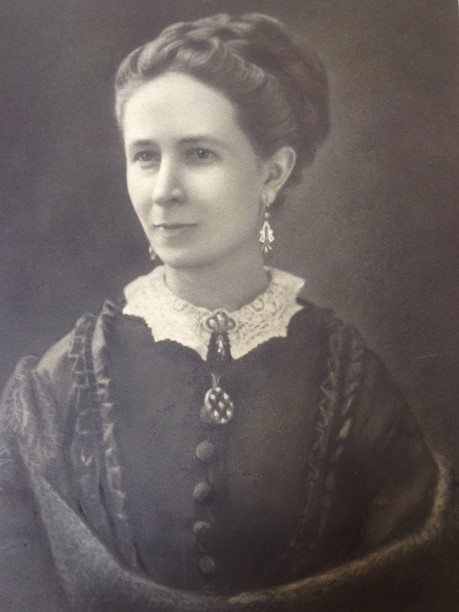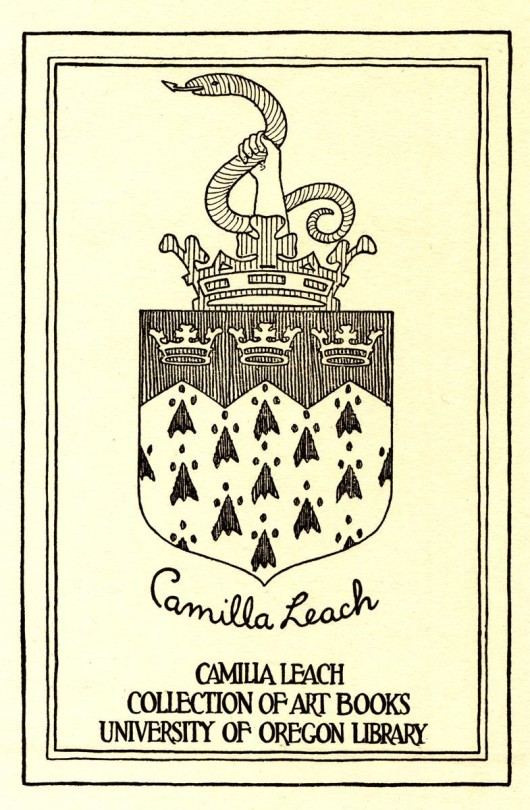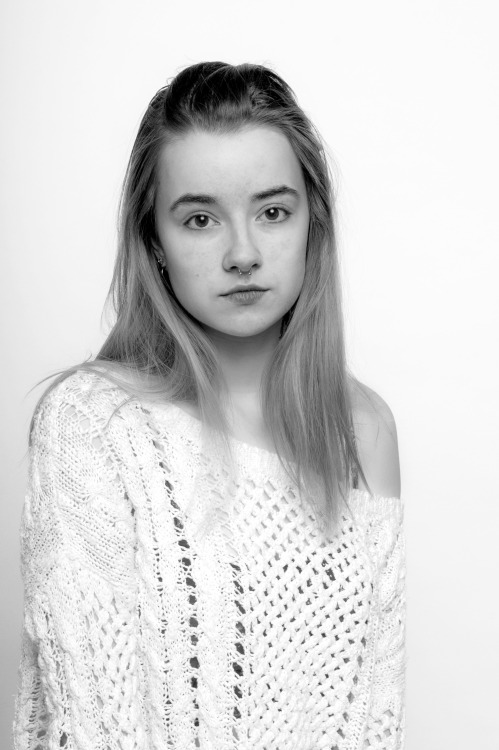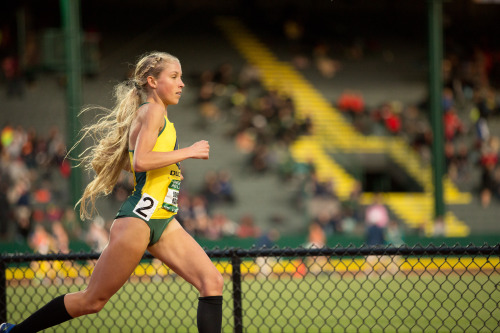#university of oregon
Stable Hard-Sphere Packings with Arbitrarily Low Density
A new strategy for packing hard spheres of different sizes could lead to novel ways of creating strong, lightweight materials.
[…]
To create structures that are light and strong, researchers leverage the interplay between internal compression and tension, removing unnecessary material that does not contribute to this balance of forces. Because packed assemblages of hard spheres lack internal tension, the conventional wisdom is that reducing the density of such structures eventually leads to instabilities, establishing limits on how strong and lightweight they can be. Now, Robert Dennis and Eric Corwin at the University of Oregon have found a way to pack hard spheres at vanishingly small densities such that their structures are as light as desired while remaining mechanically stable [1].
Post link
New nanocrystals put a tiny twist on useful materials
A new kind of tiny particle is a big deal in UO chemist Carl Brozek’s lab.
He and his team have made a versatile kind of porous material called a metal-organic framework, or MOF, into nanocrystals—a form that’s easier to use beyond the lab. Nanoparticles such as these have a wide range of potential applications, from surface coatings that can store electric charge, to filters that remove contaminants from air or water.
The nanocrystals are the smallest and most stable MOFs made yet, said Brozek. And they have an array of interesting properties—notably, they can conduct electricity, and they behave differently depending on the exact size of the particle.
“It really feels like we’ve cracked into something new,” Brozek said. He and his team, led by graduate student Checkers Marshall, reported their advance November 24 in a pre-print posted to the research site ChemRxiv.
Post link
Bronwyn Crossman - University of Oregon - 20-Apr-2012
2012 Oregon Relays
Hayward Field - Eugene, Oregon, USA
Post link
Jordan Hasay - University of Oregon - 19-Apr-2013
2013 Oregon Relays - Women’s 5k
Hayward Field - Eugene, Oregon, USA
Post link
Jordan Hasay - University of Oregon - 19-Apr-2013
2013 Oregon Relays - Women’s 5k
Hayward Field - Eugene, Oregon, USA
Post link
Learn About Mack Robinson, Olympic Silver Medalist, Community Activist and Jackie’s Older Brother (LISTEN)
Learn About Mack Robinson, Olympic Silver Medalist, Community Activist and Jackie’s Older Brother (LISTEN)
by Lori Lakin Hutcherson (@lakinhutcherson)
In yesterday’s daily drop we celebrated sports legend Jackie Robinson. But did you know his older brother Mack Robinson had his own claim to sports fame?
Matthew Mackenzie “Mack” Robinson was an outstanding track and field athlete who won the silver medal in the 200-meter event at the 1936 Berlin Olympics, finishing just four tenths of a second behind…

Today’s post, entitled “Camilla Leach: A sophisticated spitfire (1835-1930)”, comes from Paula Seeger, Design Library, University of Oregon, with significant contributions from Ed Teague, Retired Director of Branch Libraries, University of Oregon. All photos are courtesy of University of Oregon Libraries.

Summary
Ultimately known for her role as the founding librarian-manager of the Design (formerly Architecture and Allied Arts) Library at the University of Oregon, Miss Camilla Leach left a legacy of caring for student success and ambition throughout her long career. Only in the last third of her life did she find a role in the library, with the majority of her time spent in the classroom or dormitory, supervising and guiding the lives of young adults, especially girls. Miss Leach constantly updated her position during a long career trajectory, never losing her love of the arts and French culture and design. She travelled to Paris in her 30s, was committed to the plight of French orphans during WWI, and translated Auguste Racinet’s L’Ornement Polychrome (Paris, 1869-73) for the benefit of the students of the University of Oregon. This fascination with French culture and artistry bestowed an air of sophistication to Miss Leach. Combined with her “go-getter” determination that impressed the administration and faculty, Miss Leach’s keen observational skills and broad knowledge let her anticipate the needs and interests of her loyal colleagues and patrons. This unique mix allowed Miss Leach to win over those who doubted she could take an active role in organizing a new library and departmental administration office at the age of 79. Even though she “retired” twice from the libraries at the University, Miss Leach remained active in the community and social circles, giving talks on the relation of art to library work to civic groups into her 90s. Piecing together her history, as well as reflecting on her legacy, is a worthy exercise that re-emphasizes a lifelong commitment to arts education and wisdom born from the strength of longevity.
Background and Early Career
Miss Leach’s history has been difficult to completely trace. We assume certain facets of her life and try to fill the gaps within her story for which we do not yet have evidence, such as Miss Leach’s education and much of her early life. While we know she was born in Rochester, New York in 1835, and there are some accounts of her attending East Coast schools, we next find definitive mention of her in 1855. While still living at home in New York, her profession was listed as “teacher” at age 19 in the New York state census of 1855, indicating she began her teaching career early. Using broad searches of historical newspapers, we can see that she travelled south and west, taking a position at a teaching college in 1859. Her title was Governess and assistant teacher of the “English branches” at East Alabama Female College (also called “Tuskegee Female College” at its founding in 1854, later “Huntingdon College” after the institution moved to Montgomery). By 1865, she arrived in Chicago and was granted a teaching certificate to teach at a number of public schools including Skinner school and the main Chicago High School. It is during this time Miss Leach was elected to be “Professor of Rhetoric and English Literature” at the high school and a wage dispute was noted (1870):
Miss Camilla Leach was recently elected professor of English literature in the Chicago high school, but the board of education refuses to pay her over $1000 for work for which her male predecessor received $2,200.1
It is unknown whether this dispute led to her resignation, but shortly after, in 1871, Miss Leach applied for a passport to travel to Europe to study art and visited Paris in 1871-72, becoming well-versed in French art and architecture. After Europe, she returned to a position as a high school teacher in St. Louis in 1872-73, and was announced as a teacher at the Washington school for Minneapolis Public Schools in 1878. Another newspaper account in August 1878 mentioned that she was an art instructor in a Placerville, CA, ladies’ seminary and private school (TAE Academy). Having settled in Oakland, CA, from 1879-89, Miss Leach taught drawing and French at the Snell Seminary, a “boarding and day school for girls” that operated from 1878-1912. While at the Snell Seminary, Miss Leach perhaps learned more about opportunities that could be found in Oregon. During her tenure, one of the Seminary’s founders, Dr. Margaret Snell, began an affiliation with Oregon State University (then called the Corvallis College and the State Agricultural College of Oregon) through a Corvallis resident who happened to be staying in the Oakland area caring for an ailing relative. Dr. Snell went on to found the department of “Household Economy and Hygiene in the Far West,” the first in the western U.S. and went on to a great legacy at Oregon State.3

Perhaps also influenced by Dr. Snell’s continuing education in the East, Miss Leach attended Bryn Mawr with “Hearer” status in 1889-902 and it is assumed that this is where she completed her education about “library methods”. Returning to California, Miss Leach was introduced as Mistress of Roble Hall, a ladies’ dormitory at Stanford University in 1891, the first year Stanford started enrolling students. After administrative and facility restructuring, she was let go from Stanford in 1892, heading north to Portland, OR.
Miss Leach stayed five years in Portland working as a private tutor and head of a private school, perhaps of her own creation, within a wealthy businessman’s household. These many years spent as an educator, administrator, and overall caregiver of young student lives had now prepared Miss Leach for a more significant career transition as she was recruited by the University of Oregon in 1897 to become their first dual registrar-University librarian, beginning her new role in libraries. It is unknown what motivated this career change for Miss Leach at about age 60–or age 50: In subsequent census records Miss Leach somehow gets ten years younger.
University of Oregon Career
In 1897, the University of Oregon in Eugene recruited Miss Leach to be the school’s first registrar while also serving as the University’s librarian in a combined position. The dual job was split in 1899, when Miss Leach became “only” the University librarian and, later, the school’s first art librarian. She contributed to the school’s publications, offering a review of Bryn Mawr and several original pieces of poetry for the University’s yearbook and monthly journals. The University originally had a small library collection, based mainly upon generous donations from professors before state allocations were negotiated, and the collection was relocated several times before the first purpose-built library opened in 1906. In 1912, Miss Leach retired from her library position, but continued to teach in the art school as a drawing instructor and teacher of art history, which she continued throughout her next role. At the time of her “retirement” as a reference librarian from the main library, the local newspaper told of her reputation:
Miss Leach is perhaps better known than any other one character upon the Oregon campus during this time. She knew personally every student from freshman to senior, and has hundreds of sincere friends among the Oregon graduates all over the state.4
Resistant to fully retiring, and beloved by faculty and students, Miss Leach continued to work in the new main library until 1914 when, at the age of 79 years, she became the founding librarian and administrative assistant at the new School of Architecture and Allied Arts. Her transfer to the new location was met with doubt by the founding Dean of the school, Ellis F. Lawrence, who was resistant to hiring a 79-year-old to the post. He expressed his doubts to the University President, and was reassured that Miss Leach could hold her own and make worthy contributions. Dean Lawrence described his first meeting with her as particularly memorable:
When I [met] her at the first staff conference I was very conscious that there was a divine fire in the proud little figure before me. It was shining through the brightest pair of the darkest eyes I have ever felt boring into my soul. After listening to my outline of procedure and objectives, Miss Camilla leaned over the table and in the snappy, crisp utterance I was later to know so well, she said, “Sir, I was teaching art before you were born.” If she had said ‘thirty years before you were born’, I feel sure she would have been within the truth. Naturally I thought – here is a Tartar to deal with, and anticipated plenty of excitement. Little did I know how deliciously that excitement was to be; how surprising and invigorating it could be! Miss Camilla was placed in charge of the Art Library. Before I knew it she had that department functioning more efficiently than I had thought possible, even in my fondest dreams. But her work did not stop there. She became our matriarch, tradition builder, exemplar of manners, personnel officer – and very much in evidence as advisor to the Dean.5
Indeed, students took to calling her the “Mother of Our Library” and Aunt Psyche (Pidgy), a
[G]uiding spirit since its inception….All of us have been visited by her kindly interest, – the serious have been led to that exact niche where Volume X lies; the frivolous (and everyone knows that some of us often go to the library on missions quite foreign to study), – we have been ushered into her acquaintance by the sharp tap of her pencil or by the censure of her warning nod. But however that may be, each of us, as we step out into the world, is to carry a pleasant recollection of Miss Camilla Leach.6
Another story of Miss Leach helping students, while displaying her expertise in French architecture, is noted in the Eugene Guard newspaper from Saturday, April 20, 1918: A girl on campus had a friend stationed in France, but the US military would not reveal the location. The girl’s friend sent her a photo with a cathedral in the background. The girl didn’t recognize it but another friend suggested she take it to Miss Leach, the art librarian. Sure enough, Miss Leach immediately identified the cathedral and the girl was able to locate her military friend.7
In addition to her teaching, library, and administrative duties, Miss Leach consulted with library colleagues and was in attendance at the earliest foundational meetings of the Oregon Library Association (1904). Her attendance at local arts events is well-documented in the local newspapers, as are the frequent talks she would give to local civic organizations (one titled “The Relation of Art to Library Work”), and her reputation as a fine sketch and free-hand artist was known throughout the Northwest.
Philosophy of Academic Rigor and Student Advocacy
Miss Leach had a sense of humor that she rarely indulged, but there were certain topics that were sure to raise her ire. In one instance, as regaled by Dean Lawrence in his memorial writing, a painting professor teaching Civilization and Art Epochs was discussing symbolism with his class. It was reported that he used the example of the serpent, once a symbol of wisdom, but over the years mixed together with many ingredients and encased in a skin, much like a sausage. This description, when relayed to an incensed Miss Leach, caused her to question why culture and wisdom should be treated with levity. She often wondered why artists and architects could not have higher academic standards. Dean Lawrence described her struggle with the habits of scholarship:
Knowledge was to her the basis of her philosophy and conduct, though she little knew how much her intuitions and her fine intellectual common-sense tempered that knowledge. … [T]he idiosyncrasies of the creative artists often irked her. Yet she came to participate valiantly in the methods of the School which called for the freedom necessary to bring out the creative urge in each student.8
To demonstrate how Miss Leach advocated for her students, Dean Lawrence told of a new student who worked extremely hard and produced decent results for one who had no artistic background, which thrilled Miss Leach. However, after flunking out at the end of the term, causing the student to leave without even a good-bye, Miss Leach arrived at the Dean’s office, furious at a system that would let go of a potential genius and lobbied on his behalf. She urged the Dean to reconsider the student’s case and bring it before the Faculty. Together they won the case and the student was reinstated and went on to “make good,” much to the satisfaction of Miss Leach.
Legacy
Miss Leach completed a handwritten history of the University of Oregon in 1900, likely one of the first written of the 24-year old institution, with a volume still found in the library’s Special Collections and University Archives department. During her time at UO, Miss Leach, along with other library and University staff, were interested in caring for French children affected by the war, particularly in 1919. This seems entirely appropriate and in line with Miss Leach’s fascination with French culture and arts.
Camilla Leach finally truly retired in 1924, primarily due to declining health after a fall, and losing her eyesight. She moved back east and died in Jonesville, Michigan (near Battle Creek) in 1930, while staying with a relative. Dean Lawrence wrote a tribute to Miss Leach after her death, describing her ultimately as an “exquisite cameo who was classic in her perfection.” He noted that she was in the process of translating Auguste Racinet’s L’Ornement Polychrome (Paris, 1869-73) for the benefit of the students. The Racinet volume can still be found among the collections of today’s Design Library, which in 1992 was the focus of an expansion of Lawrence Hall, the home of the College of Design.

There are several other books still containing the bookplates indicating they were purchased with the fund set up for the “Camilla Leach Collection of Art Books,” a special collection in the University Library that remained well after Miss Leach’s death. The fund, set up in 1923, was described as a perpetual fund designed for purchasing art books from the interest earned each year. Mrs. Henry Villard, widow of one of the pioneer founders of the University, donated and suggested that a portion of the yearly endowment to the libraries from the Villard gift should be set aside to build up the Leach fund. There are several newspaper accounts of faculty members, and their families, donating books and financial support to the fund. In addition to books purchased, over the years as Miss Leach’s history became better known, library staff have unofficially named a two-story reading room the “Camilla Leach Room” in her honor. The room enables study and research and is used to present selections from the library’s collection of artist’s books, rare books, and other artifacts.
Perhaps the most touching of Miss Leach’s legacy is how she influenced her initial detractors. Dean Lawrence fancied himself a bit of a creative writer, and one can find several complete and incomplete short stories and novella manuscripts among his personal writings in the archives of the University of Oregon Libraries. In addition to the 6-page memorial tribute that Lawrence penned that was devoted to Miss Leach (excerpted above), one can also read an incomplete 60-page murder-mystery novella. The protagonist who is able to solve the case faster than the sheriff? A Miss Marple-like character named “Miss Camilla Chaffin” described as wearing a Paisley shawl, lace collar, and a lavender ribbon in her hair. She was the “oldest of the old-timers” and was friendly with the “dear old doddering Dean.”9
As we piece together Miss Leach’s legacy, her strength is revealed in her loyal determination to provide the best resources and environment for students in order to nurture their creativity and scholarly output. Her ability to expose interests, and proactively anticipate the materials needed for letting those interests flourish, were among her special gifts to the students she served and the colleagues she assisted. Her legacy continues today in the resources and services that are at the forefront of today’s Design Library.

Notes
1 “Untitled News Article,” Weekly Oregon Statesman, March 18, 1870, 3.
2 Program, Bryn Mawr College, p. 252. Accessed through Google Books.
3 “The ‘Apostle’ of Fresh Air…Margaret Comstock Snell (1844-1923)” George Edmonston Jr., OSU Alumni Association, undated. http://www.osualum.com/s/359/16/interior.aspx?sid=359&gid=1001&pgid=536
4 “Veteran U.-O. Librarian Retires with Honor,” Oregon Daily Journal, October 4, 1912.
5 Ellis F. Lawrence, “Miss Camilla – A Portrait” (Eugene, Ore., 1930), in Ellis Fuller Lawrence papers, Ax 056, Box 13, Special Collections and University Archive of the University of Oregon Libraries, Eugene, 2.
6“Miss Camilla Leach,” in Oregana, 1912 vol., 23.
7“Censor Sleeps on Job,” Eugene Guard, April 20, 1918, 4.
8Ellis F. Lawrence, “Miss Camilla – A Portrait” (Eugene, Ore., 1930), in Ellis Fuller Lawrence papers, Ax 056, Box 13, Special Collections and University Archive of the University of Oregon Libraries, Eugene, 4-5.
9 Ellis F. Lawrence, “The Red Tide,” in Ellis Fuller Lawrence papers, Special Collections and University Archive of the University of Oregon Libraries, Eugene, also in Harmony in diversity : the architecture and teaching of Ellis F. Lawrence, edited by Michael Shellenbarger, Eugene, Or. : Museum of Art and the Historic Preservation Program, School of Architecture and Allied Arts, University of Oregon, 1989.
Other sources consulted
● 1903 Webfoot (University of Oregon Yearbook)
● Bishop’s Oakland Directory for 1880-81 “Containing a business directory, street guide, record of the city government, its institutions, etc.” (varies). “Also a directory of the town of Alameda” (issues for <1880-81-> also include Berkeley). Compiled by D.M. Bishop & Co. Description based on: 1876-7. Published: San Francisco : Directory Pub, Co., <1880-> Open Library OL25463540M. Internet Archive bishopsoaklanddi187778dmbi. LC Control Number 11012620. https://archive.org/details/bishopsoaklanddi188081dmbi (Listed as teacher at Snell’s Seminary)
● “Board of Education,” Chicago Tribune, October 9, 1865, 4.
● “Board of Education,” Minneapolis Tribune, June 22, 1878, 4.
● “East Alabama Female College,” South Western Baptist, November 17, 1859, 3.
● “Former Undergraduates That Have Not Received Their Degrees,” in Program Bryn Mawr College, 1903-04, 1906, 283, https://books.google.com/books?id=GKRIAQAAMAAJ.
● “General Register of the Officers and Alumni 1873-1907,” vol. 5, no. 4, University of Oregon Bulletin (Eugene, Ore.: University of Oregon, 1908), http://hdl.handle.net/1794/11152.
● “Gift of $100 Received,” Eugene Guard, November 6, 1924, 12.
● Henry D. Sheldon, The University of Oregon Library 1882-1942, Studies in Bibliography, No. 1 (Eugene, Ore.: University of Oregon, 1942), http://hdl.handle.net/1794/23064.
● “New York State Census, 1855,” database with images, FamilySearch (https://familysearch.org/ark:/61903/3:1:33S7-9BPY-97K6?cc=1937366&wc=M6G3-GZ7%3A237407901%2C237457701 : 22 May 2014), Orleans > Kendall > image 15 of 40; county clerk offices, New York. (teacher at 19)
● “Salary Dispute,” The Illinois [Chicago] Schoolmaster A journal of educational literature and news v. 4 1871, 260 https://ia601409.us.archive.org/5/items/illinoisschoolma41871gove/illinoisschoolma41871gove.pdf
● “SPOTLIGHT ON A LEGACY: Treasures of the Design Library” Ed Teague, 2014, https://library.uoregon.edu/design/century
● “TAE Academy,” Placerville Mountain Democrat, August 10, 1878, n.p.
● “United States Census, 1900,” database with images, FamilySearch (https://familysearch.org/ark:/61903/1:1:MSDX-B6R : accessed 15 April 2018), Camilla Leach in household of Mary E Cox, South Eugene Precincts 1 and 2 Eugene city, Lane, Oregon, United States; citing enumeration district (ED) 112, sheet 8A, family 162, NARA microfilm publication T623 (Washington, D.C.: National Archives and Records Administration, 1972.); FHL microfilm 1,241,348. (age = ten years younger)
● “Untitled News Piece,” Eugene Guard, May 1, 1928, 6. – Talk “Relation of Art to Library Work”
● “What’s in a Name? Design, and Library” Ed Teague, Association of Collegiate Schools of Architecture. Sept. 12, 2017. http://www.acsa-arch.org/acsa-news/read/read-more/acsa-news/2017/09/12/what-s-in-a-name-design-and-library






